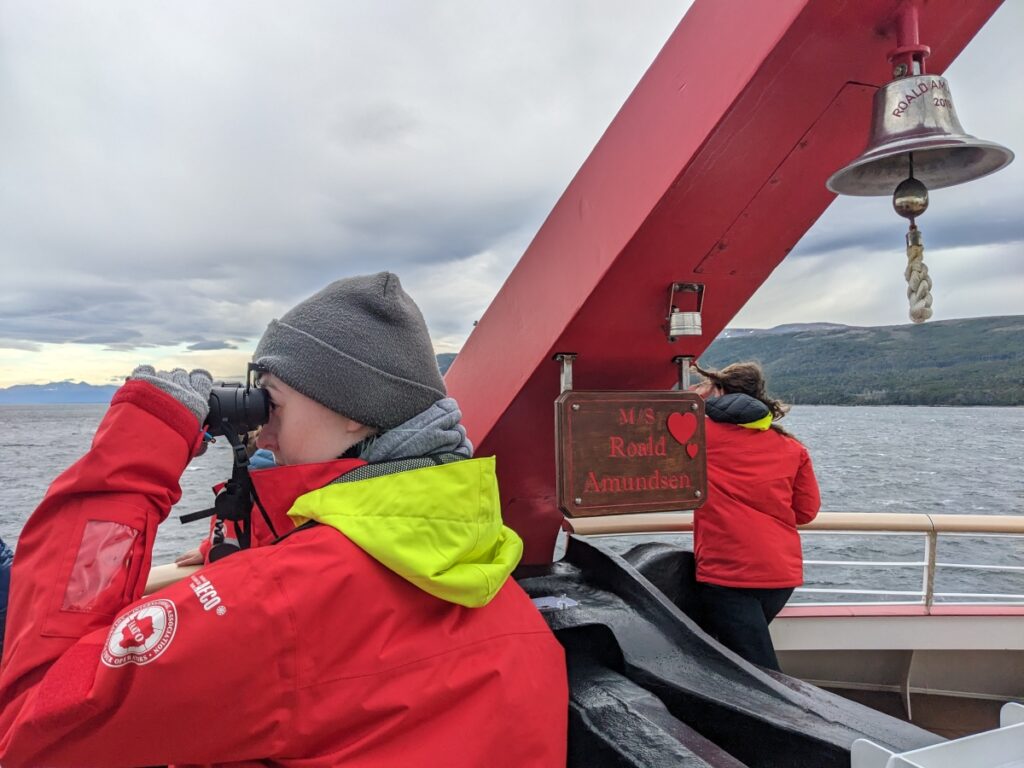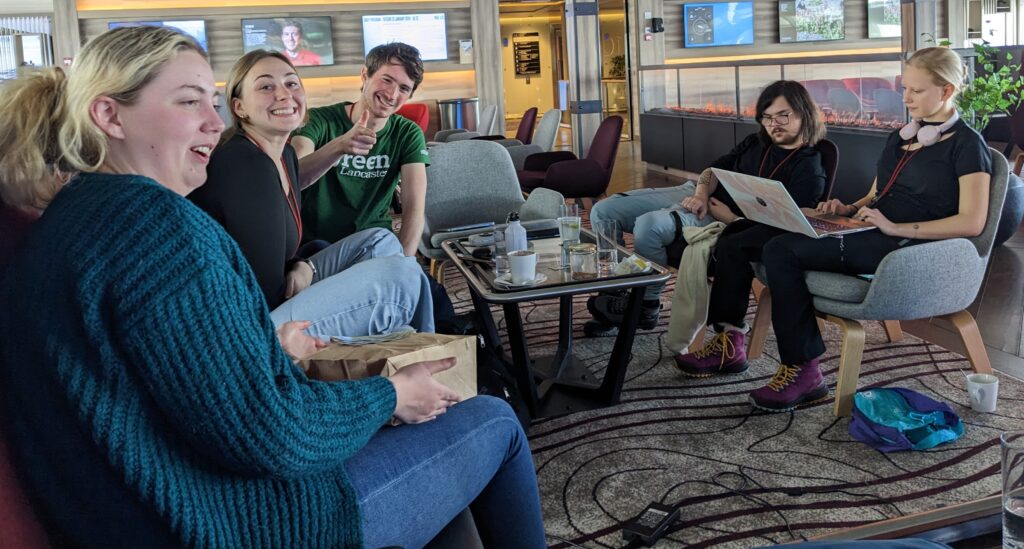Ushuaia: fin del mundo, fin de la expedición
Day 17 – 23 January, written by Mike
Early this morning, while we slept, we left the Drake Passage and entered the Beagle Channel. A straight that cuts through the Tierra del Fuego Archipelago, the Beagle Channel separates Isla Grande de Tierra del Fuego from a cluster of smaller islands at the very southern tip of the South American continent. The eastern part of Isla Grande de Tierra del Fuego belongs to Argentina, while the western half, and the islands on the other side of the Beagle channel are Chilean, with the Beagle forming a boundary between the two countries for part of its extent.

After two rough days on the Drake Passage, it was a relief to wake up to smooth sailing in the enclosed waters. On deck we were met by a warm breeze and earthy aroma blowing off the South American mainland. Many of our students has been laid low with seasickness for the past couple of days, but eventually everyone emerged from their cabins.

Our surveys started at 0700, and we immediately spotted the first of several groups of dusky dolphins. A small dolphin, reaching up to 100kg in weight, duskies are found in cold, upwelling waters around the higher latitudes of the southern hemisphere. We watched the pods of dusky dolphins as they approached and crossed in front of us and pulled alongside the ship and out of sight beneath the curve of the hull where they were presumably bow-wave riding. Along the starboard of the channel, tight up against the shoreline of Argentinian side we saw the blows and dorsal fins of small groups of sei whales. The sei whale is the third largest whale, and is most closely related to the blue whale, though it is considerably smaller, typically 15m long and 20 tons in southern hemisphere populations, and only around one fifth the weight of a blue whale. They are thought to be the fastest whales, with a top speed of 50 km/h. Our final marine mammal sighting was a single South American sea lion, passing us in the centre of the channel.

Our seabird crews were also busy. Alongside now-familiar species such as kelp gulls, black-browed albatross and giant petrels, we encountered species that we had missed on the passage out of the Beagle a few weeks earlier, when we exited during the night. The guidebooks came out for the first time in a while as we logged sightings of sooty shearwaters, dolphin gulls and South American terns.

Before long we passed Puerto Williams, a Chilean city, and southernmost settlement in the world. We were joined by the pilot’s boat and then, beneath the Martial Mountains, Ushuaia hove into view. Ushuaia is the capital of Tierra del Fuego province, and the southernmost city of Argentina (but not the world, sorry, maps don’t lie). Ushuaia was our final destination, and as we entered the port our watches ended, and the data-collecting part of the expedition was over. After lunch we got together for a data-compiling, map-making and figure-plotting session, preparing to present our findings to our fellow passengers the next day.

